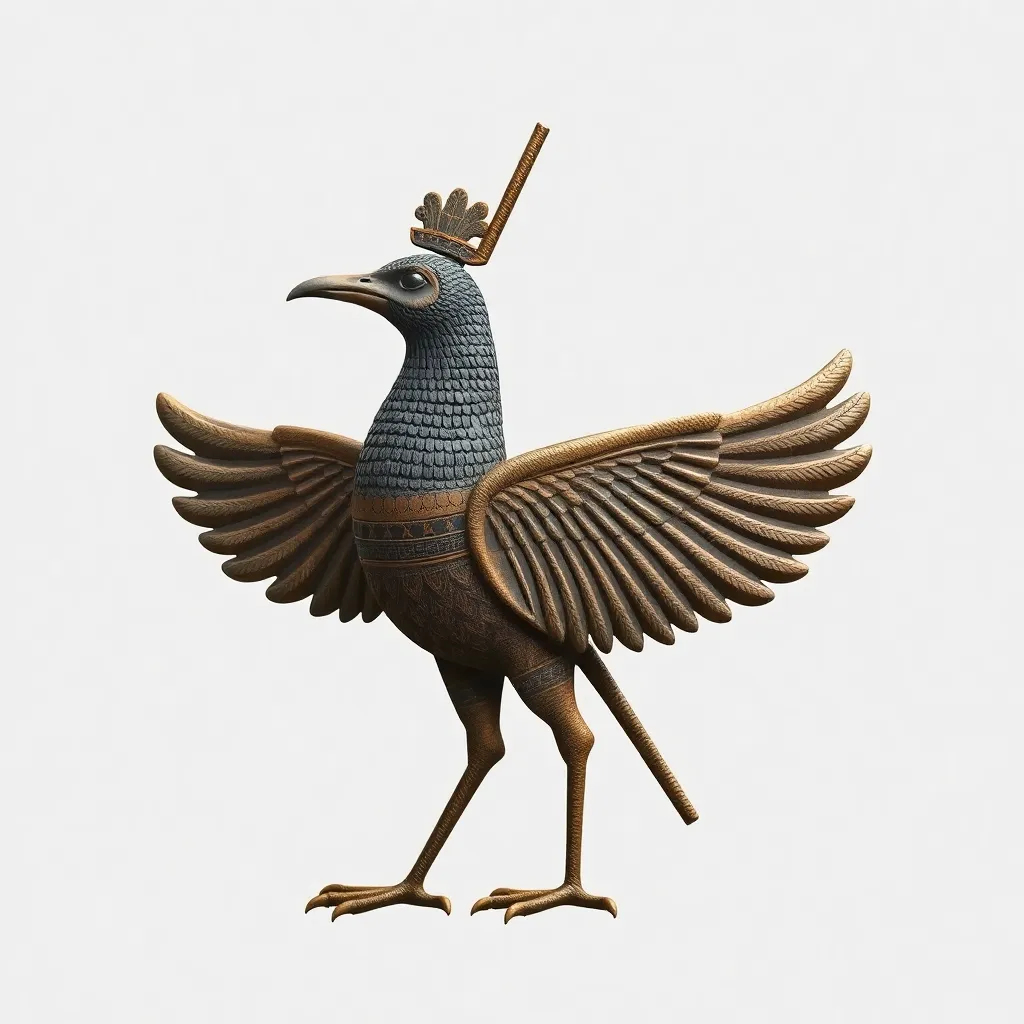The Bennu Bird: A Cultural Symbol of Egyptian Identity
I. Introduction
The Bennu Bird, often depicted as a heron or a stork, holds a unique place in ancient Egyptian mythology and culture. This mythical bird symbolizes renewal, rebirth, and the cyclical nature of life, making it a powerful emblem in the Egyptian identity. Cultural symbols like the Bennu play a crucial role in shaping and reflecting national identities, influencing the way people perceive their heritage and history.
This article aims to explore the multifaceted significance of the Bennu Bird in Egyptian mythology, its historical context, artistic representations, and its relevance in modern Egyptian identity. By delving into these aspects, we can better understand how this ancient symbol continues to resonate in contemporary society.
II. Historical Context of the Bennu Bird
The origins of the Bennu Bird can be traced back to ancient Egyptian texts, where it is often associated with creation and the sun. Its earliest references appear in the Pyramid Texts, dating back to the Old Kingdom (c. 2686–2181 BC), where it is linked to the concept of rebirth and the afterlife.
Archaeological findings, including artifacts and inscriptions, have provided further insights into the Bennu’s significance. In temples dedicated to the sun god Ra, the Bennu was often depicted, symbolizing the renewal of life through the daily cycle of the sun.
Over time, the symbolism of the Bennu evolved. Initially seen as a representation of the sun’s life-giving power, it gradually became more associated with concepts of resurrection and the afterlife, reflecting the changing spiritual beliefs of the Egyptian people.
III. The Mythology Surrounding the Bennu Bird
In Egyptian cosmology, the Bennu Bird plays a pivotal role in creation myths. According to one legend, the Bennu arose from the ashes of its predecessor, embodying the concept of life emerging from death. This cyclical nature reinforces the idea of rebirth, a central theme in Egyptian mythology.
The Bennu is closely connected to the Sun God Ra, representing the sun’s daily resurrection as it rises in the east. This connection emphasizes the importance of the Bennu in the cycle of life and death, illustrating how the Egyptians viewed the universe’s constant state of renewal.
- Myths often depict the Bennu as a guide for souls in the afterlife, symbolizing hope and continuity.
- Stories of the Bennu are intertwined with those of Osiris, the god of the afterlife, reinforcing its role in resurrection.
IV. Artistic Representations of the Bennu Bird
The Bennu Bird is prominently featured in ancient Egyptian art and architecture. It can be found in temple reliefs, tomb paintings, and papyrus scrolls, often depicted in flight or perched on a solar disk.
In hieroglyphs, the Bennu is represented by a specific glyph that conveys its significance in the context of rebirth and renewal. Its image is often associated with other symbols of life, such as the ankh, further enhancing its cultural importance.
The influence of the Bennu Bird extends into modern art and culture. Contemporary artists often draw inspiration from this ancient symbol, crafting works that reflect themes of renewal and the connection to heritage.
V. The Bennu Bird as a Symbol of Resurrection and Renewal
Rebirth is a fundamental concept in Egyptian culture, with the Bennu Bird serving as a powerful symbol of this idea. The Egyptians believed in the cyclical nature of life, where death was not an end but a transition to another state of existence.
The association of the Bennu with life and death can be seen in various cultural practices, including funerary rituals where the deceased were believed to be reborn into the afterlife.
- The Bennu’s symbolism resonates with other cultural representations of resurrection, such as the phoenix in Greek mythology.
- Both symbols embody the idea of transformation and the continual cycle of life.
VI. The Bennu Bird in Modern Egyptian Identity
In contemporary Egypt, there has been a revival of the Bennu Bird as a national symbol. This resurgence reflects a growing appreciation for ancient heritage and cultural identity among Egyptians.
The Bennu is often featured in contemporary Egyptian art and literature, where it serves as a metaphor for resilience, hope, and renewal in the face of challenges. Artists and writers utilize the imagery of the Bennu to express themes related to national pride and cultural continuity.
Moreover, the Bennu Bird’s presence can be felt during national celebrations and festivals, where it symbolizes the enduring spirit of the Egyptian people. It acts as a reminder of the rich history and cultural legacy that shapes modern Egyptian identity.
VII. The Bennu Bird in Global Culture
Globally, the Bennu Bird has influenced various myths and cultural narratives, inspiring interpretations that transcend borders. Its themes of resurrection and renewal resonate with many cultures, leading to cross-cultural adaptations of the symbol.
In popular media and literature, the Bennu has appeared in various forms, often linked to stories of rebirth or the cyclical nature of existence. This global recognition highlights the universal appeal of the themes associated with the Bennu Bird.
VIII. Conclusion
The Bennu Bird serves as a profound symbol of Egyptian identity, encapsulating the themes of rebirth, renewal, and resilience. Its significance extends from ancient mythology to modern cultural expressions, reflecting the enduring legacy of Egypt’s rich heritage.
As we explore the importance of cultural symbols, the Bennu stands out as a testament to the ways in which history and mythology shape national identity. In today’s world, the Bennu Bird continues to inspire and resonate, reminding us of the profound connections between past and present.




